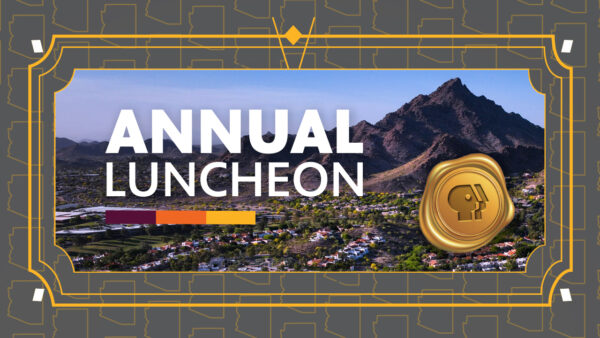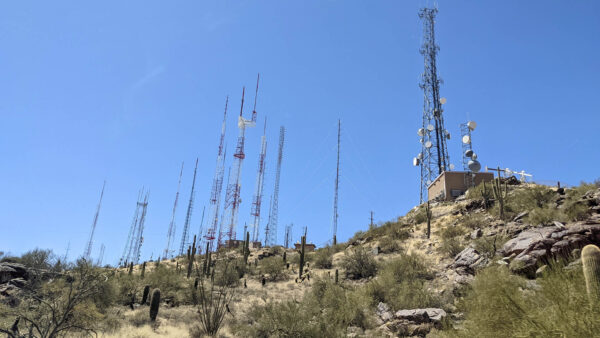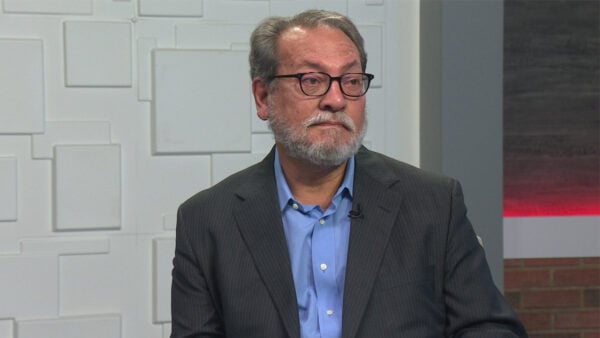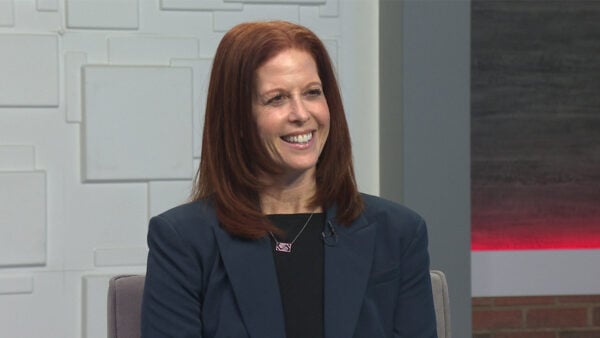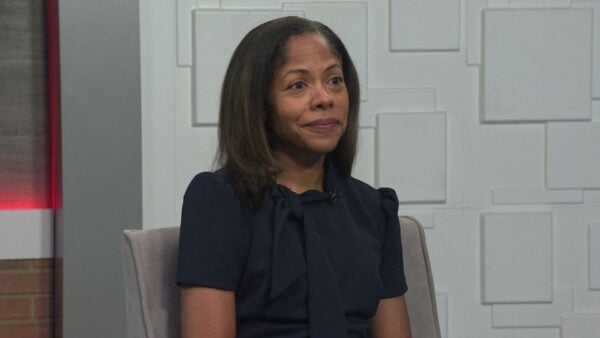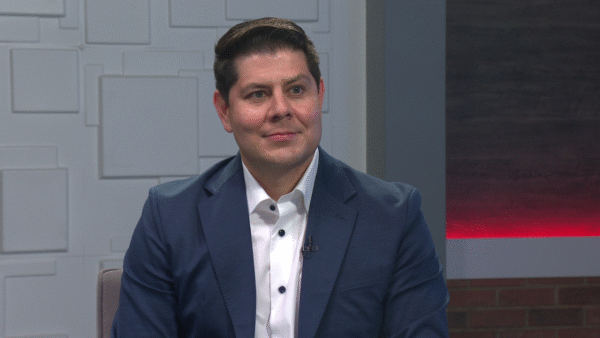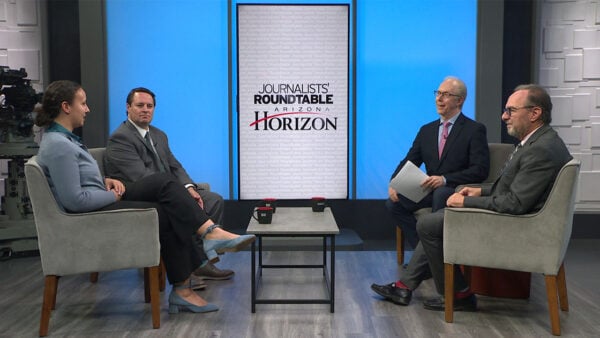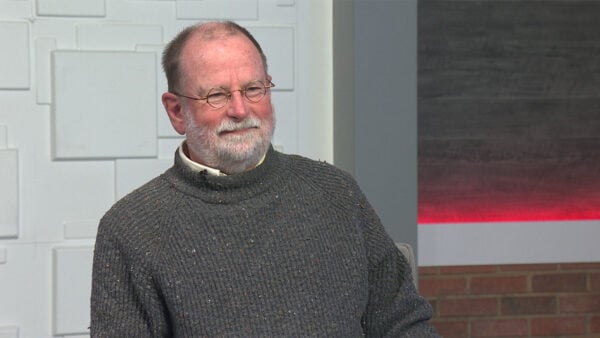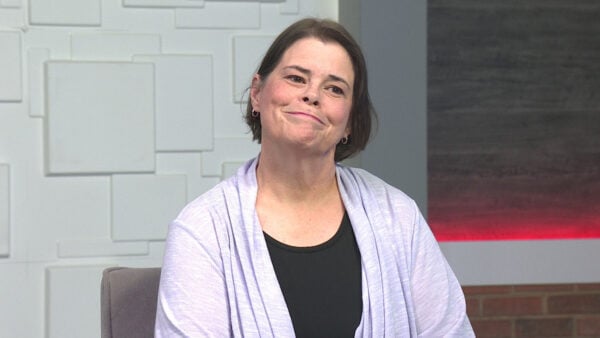Phoenix and Tucson have entered an agreement for Phoenix to store its excess Colorado River water in Tucson. The agreement is of mutual benefit to both cities. Arizona State University associate professor Dave White, who heads the Decision Center for a Desert City and studies water management decisions, will discuss the agreement.
Ted Simons: Tonight's edition of Arizona sustainability looks at a water storage agreement between Phoenix and Tucson involving excess Colorado River water. Here is ASU professor Dave White who heads the decision for a desert city. Thanks for joining us. Explain this agreement between Phoenix and Tucson. We'll take it from there.
Dave White: The essence of the agreement is that Phoenix is going to provide excess Colorado River water to the city of Tucson. The city of Tucson will bank that water in their underground storage aquifer. In times of shortage in future years the city of Phoenix will be able to receive Tucson's share of that Colorado River water in future years.
Ted Simons: Why Tucson?
Dave White: Well, it really makes sense for a lot of reasons. First it maximizes the utilization of our existing infrastructure. So it takes advantage of the fact that we have the central Arizona project canal that connects Phoenix and Tucson, that Tucson has an extensive system foreground water storage and recovery. More so than Phoenix. That Phoenix currently is not utilizing its full share of its allocation of the Colorado River.
Ted Simons: How much excess Colorado River water does Phoenix have?
Dave White: Surprising to many people that Phoenix, the city, utilizes only about two-thirds of the water that we have the rights to with our subcontracts from the Central Arizona Project of Colorado River water.
Ted Simons: So what's happening to that water now?
Dave White: We essentially lease it back to the Central Arizona Project and it goes to other uses. Instead of municipal and industrial uses within the city of Phoenix, the CAP will reallocate that to other users, maybe agricultural users, potentially other cities this. Allows Phoenix to utilize its full allocation but save it in the Tucson aquifer.
Ted Simons: Is none of this water being saved in any place in Phoenix?
Dave White: We are taking some of the current excess Colorado River water and storing that through recharge facilities within the central Arizona region. The challenge is we don't have the capacity and the infrastructure to withdraw that water into the future. So this allows us to store it in a place where the infrastructure makes sense.
Ted Simons: Again, this is a basic question for you, does the -- are we just pumping the water down there and they pump it into the ground? When you want it does it come back up in trucks?
Dave White: No, we're taking advantage of the existing canal. The central Arizona project canalcomes from the Colorado River near Lake Havasu, 340 miles across the desert to Phoenix and continues town to Tucson. We will continue to pump that through Phoenix down to Tucson. They will store it in their aquifers. We don't pump that same physical water back up. We get their credit to the Colorado River water that they are entitled to so we take some of their allocation in the future.
Ted Simons: That water is logistically you can pump that back up from Tucson to Phoenix.
Dave White: We never pump it back up. The physical water stays in the Tucson aquifer. In future years we don't pump as much down to Tucson from the Colorado River.
Ted Simons: But you still have pumped a lot in the preceding year. Is Tucson now --
Dave White: Tucson stores that in the aquifer and they utilize that pumped ground water instead of surface water.
Ted Simons: Now I get it. Shell game.
Dave White: Yes. It's really for many people they have to understand that we actually have a system in Arizona of wet water and paper water. So there's an accounting system that goes on top of the physical water. This is a way to take advantage of that accounting system to both cities' advantage.
Ted Simons: Let's talk about Tucson. What's in it for Tucson?
Dave White: The excess Colorado River water from Phoenix will recharge their aquifer and raise the level of the ground water supply. That makes it cheaper and easier to pump that out. They already have the extensive ground water pumping network in place more so than Phoenix because they were dependent on ground water for a much longer period of time relative to Phoenix due to our more diverse surface water supplies. We have access to the salt and Verde River systems in central Arizona whereas Tucson had been relying predominantly on ground water in historical times. So they developed more storage and pumping capacity.
Ted Simons: How did this deal come about? Did the Feds play a part?
Dave White: Well, this is a really important point. I want to log the leadership here -- laud the leadership of Phoenix and Tucson as well as the respective water department heads because this is an example of a creative institutional arrangement brought about by leadership. This has been discussed going back as early as the 2011 Phoenix water management plan. So the idea has been around and it's really somewhat the crisis of the drought that has given a window of opportunity for creative solutions and then you add leaders who are willing to step forward and take opportunities and turn that into innovation.
Ted Simons: But again, the Feds didn't get in the way of this?
Dave White: Our leaders within the cities had to work with the central Arizona project, the Brewer of reclamation and all the variety of stakeholders involved in this. So there was nudging, there was arm twisting, there were a variety of kinds of conversations to allow this to happen. As mayor Stanton said, a lot of people are going to talk about water in the west. The cities are the ones who have to deal with the challenges and it's their time to act.
Ted Simons: Let's talk about those challenges. How big a deal is this to the future of Phoenix's water needs?
Dave White: It is an important example of a kind of innovation in policy making and institutional cooperation. It's a pilot project for now, so there will be a phase where there's about 850 acre feet of water which an acre foot is about 320 something thousand gallons of water. For the first few years it will be relatively modest compared to the large volumes of water we're dealing W. if that program is successful it will expand in future years. We see innovation brought about by political leadership. This program is an example of how we need to move forward in water resource management.
Ted Simons: Is Phoenix going to help Tucson perhaps expand storage facilities down there, capabilities?
Dave White: Yes, it's possible. The financial arrangements are being worked out in terms of how the agreement will be paid for. Mostly paid for by refinancing bonds within the city of Phoenix at lower rates and by the deferred cost of not having to build all that new infrastructure. In the 2011 management plan they discuss this possibility and put a rough estimate and probably a low estimate of a quarter billion dollars, 250 million, to develop the capacity in ground water pumping to deal with all of the water that we have been storing. We're not having to pay that cost now by using this arrangement.
Ted Simons: Interesting. When does this start?
Dave White: The deal is under way. We're already working out the agreement. The water will start flowing soon.
Ted Simons: We're already pumping paper down there.
Dave White: Yes.
Ted Simons: Good to have you.
Dave White: Thanks for having me.
Dave White:Associate Professor, Arizona State University;

